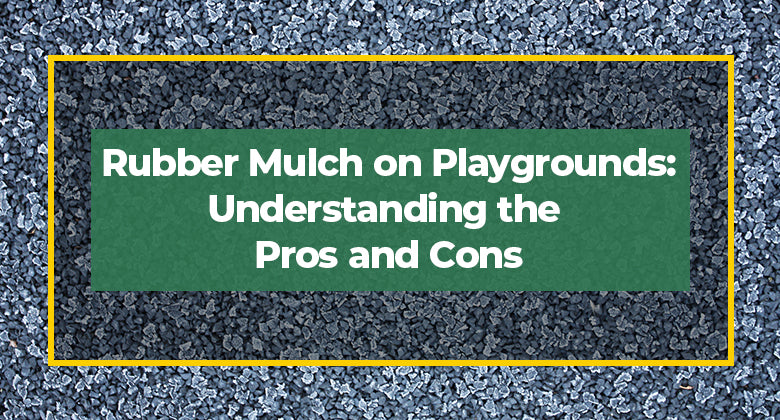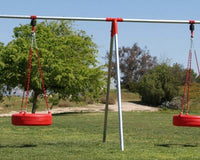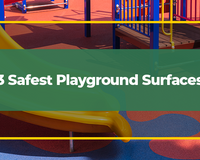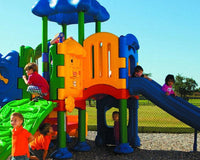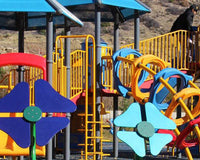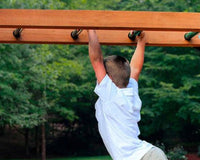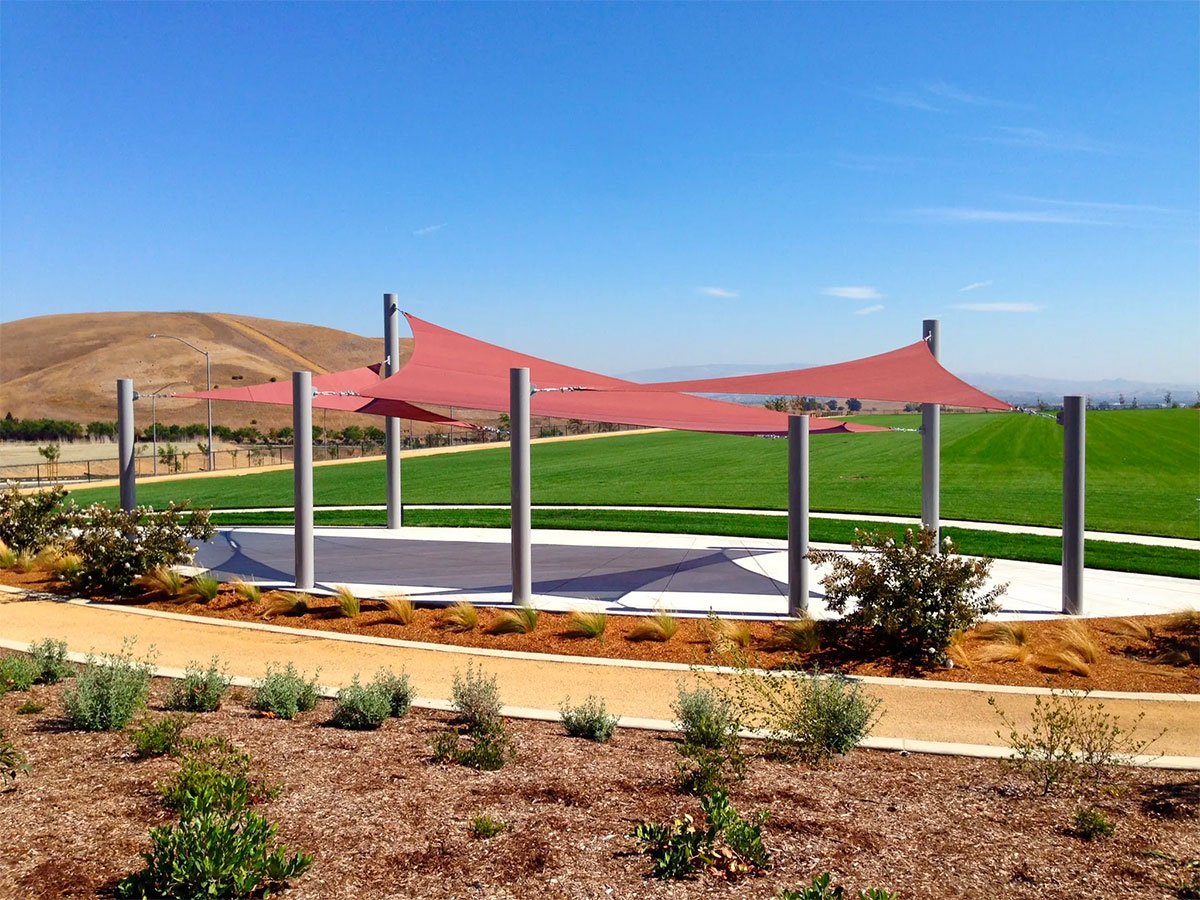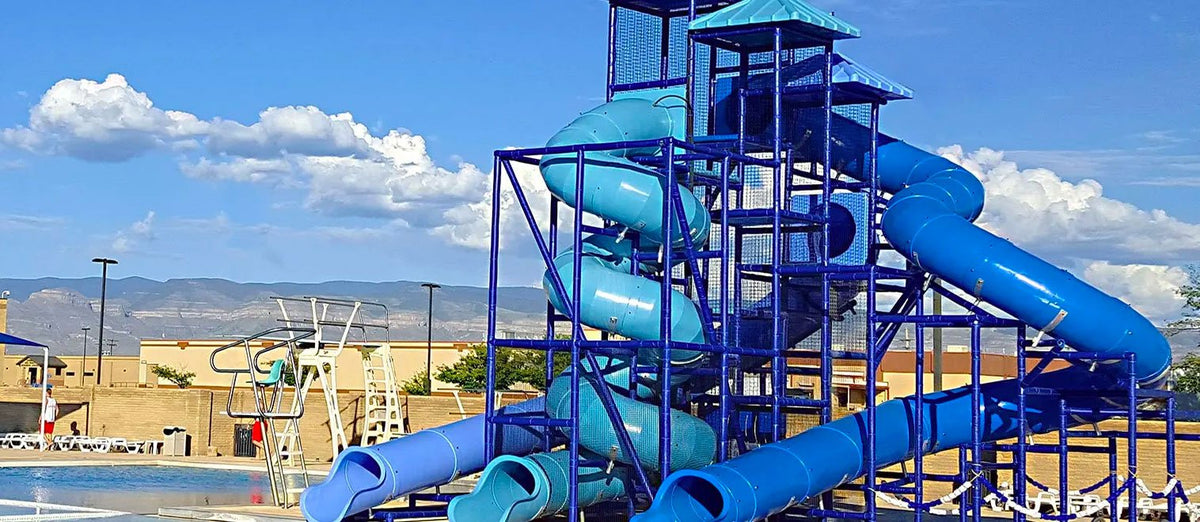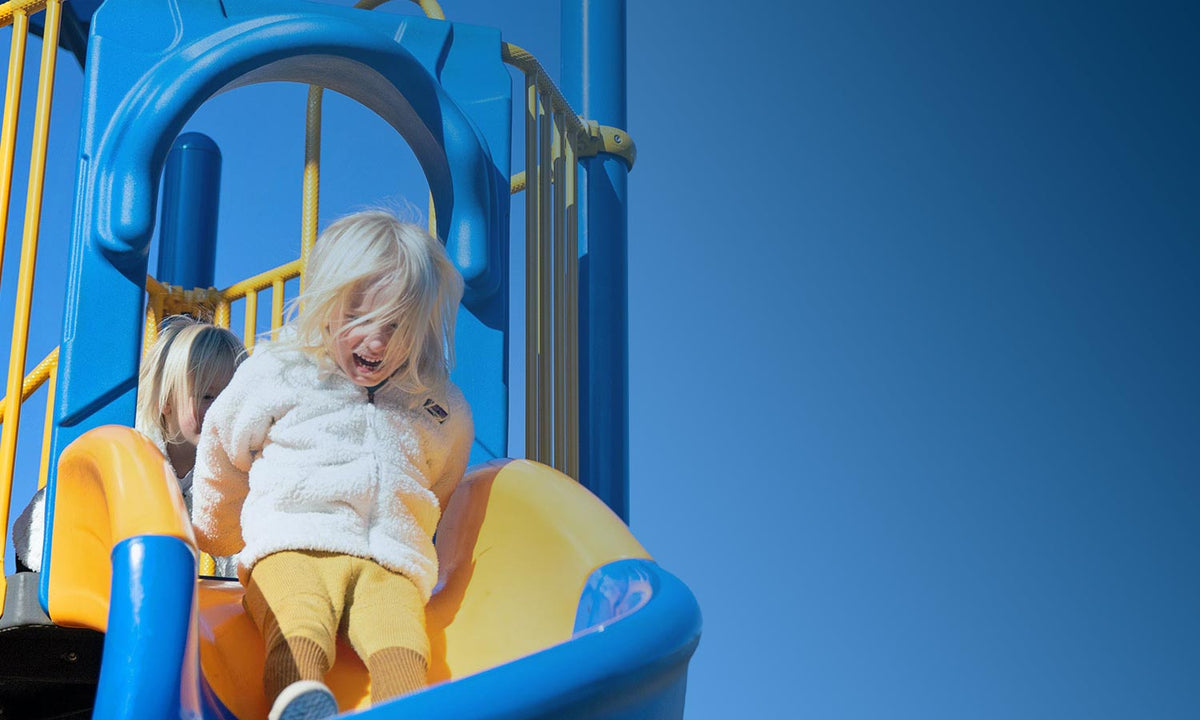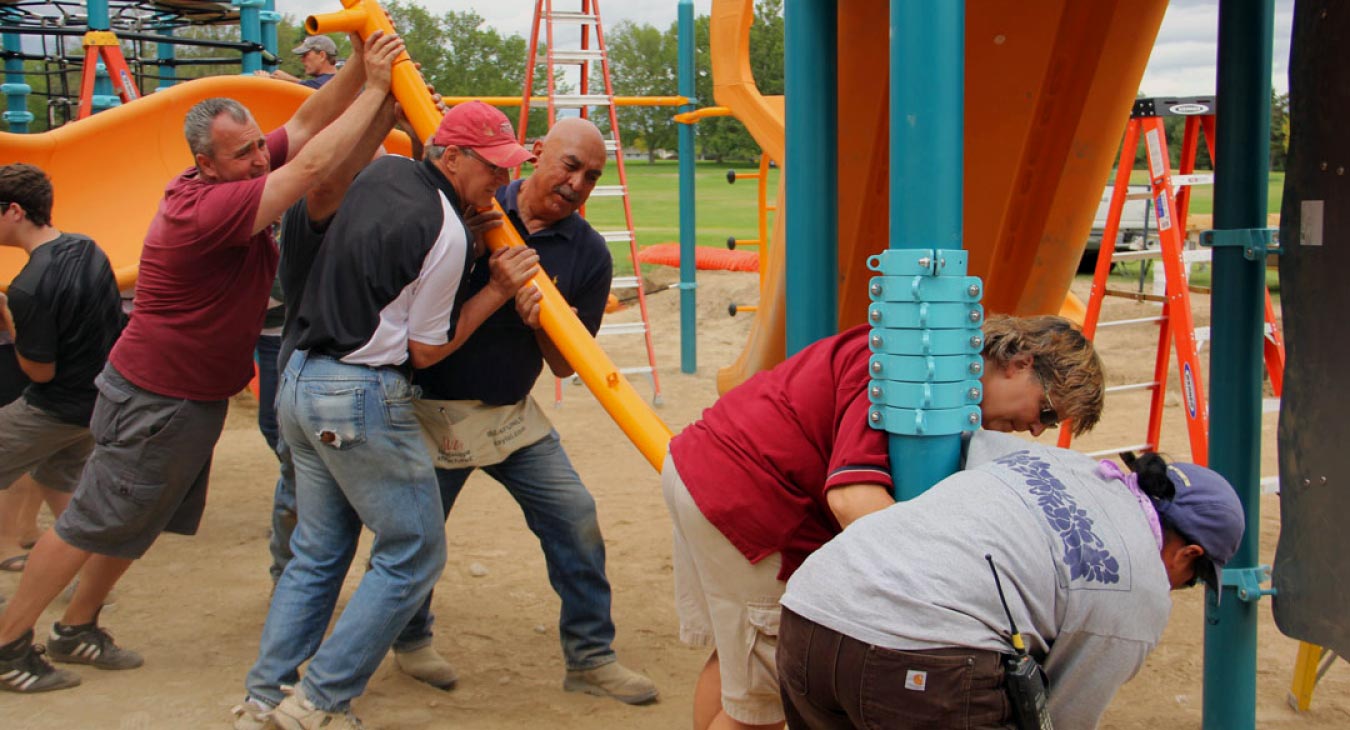Welcome to our comprehensive guide on rubber mulch for playgrounds. At WillyGoat, we’re passionate about creating safe, sustainable, and durable play environments.
Playground rubber mulch is a popular choice for children’s play areas due to its shock-absorbing properties, long-lasting durability, and low maintenance requirements.
However, we understand that you may have questions or concerns about loose-fill rubber mulch, especially about off-gassing and leaching. We’ve put together this guide to address common queries, dispel myths, and provide practical tips on using rubber mulch effectively.
At WillyGoat, we’re committed to the safety and health of children everywhere. We invite you to explore our range of high-quality playground equipment and consult our team for personalized recommendations. Let’s create amazing play spaces together!
Benefits of Rubber Mulch for Playgrounds

Playground rubber mulch has become a popular choice for recreation areas, kid’s parks, and many outdoor play spaces, and for good reason. It offers many benefits that make it an excellent option for creating safe, sustainable, and durable play environments.
Here at WillyGoat, we’re all about helping you make the best choices for your playground, and we believe rubber mulch is worth considering. Let’s delve into why.
Safety First
One of the biggest advantages of playground rubber mulch is its superior safety features. It provides excellent shock absorption, reducing the risk of injury from falls - a common concern in playgrounds.
In fact, rubber mulch can cushion falls from heights higher than most other playground surfaces can handle. When playground rubber mulch is used at its recommended depth of at least six inches, it offers superior fall protection. It’s twice as effective as wood mulch and three times better than sand.
This makes playground rubber mulch a top choice for areas under swings and at the base of tall slides.
It also meets the Consumer Product Safety Commission (CPSC) guidelines for playground safety, making it a trusted choice for schools, parks, and backyard play areas.
Sustainability Matters
Rubber mulch is also a sustainable choice. It’s made from 100% recycled tires, making it a sustainable choice that helps reduce landfill waste.
Plus, unlike wood mulch, rubber mulch doesn’t decompose, so it doesn’t need to be replaced as often. This not only saves you time and effort but also makes rubber mulch a more eco-friendly option.
Made to Last
Another benefit of rubber mulch is its durability. Unlike wood chips or sand, rubber mulch doesn’t decompose, so it lasts much longer. It’s also resistant to wind and rain, so it stays in place better, reducing the need for regular top-ups.
This also means that playground rubber mulch requires minimal maintenance, especially since it’s immune to bug and rodent infestation. This gives you incredible value down the line.
Playground Rubber Mulch vs. Other Types of Mulch

When it comes to playground surfacing, there are several options available, each with its own set of advantages and disadvantages.
Wood Mulch
Wood mulch, often made from shredded or chipped wood, is a natural and commonly used playground surface. It provides a soft landing and has a more organic look that many find aesthetically pleasing.
However, it does have some downsides. Wood mulch can decompose over time, requiring regular replenishment. It also tends to attract pests and can harbor mold or fungi, which might not be ideal for playground settings. It also retains moisture which affects its performance.
While it's a cost-effective option initially, the ongoing maintenance can add up over time.
Sand
Sand is another popular playground surface known for its soft, beach-like feel. Kids love to play in it, and it's a natural, non-toxic material that can be relatively inexpensive.
However, sand has some significant drawbacks. It doesn’t provide as much shock absorption as rubber mulch, making it less safe in terms of fall protection. Sand can also become compacted and hard over time, requiring regular raking and topping up to stay effective.
Additionally, sand can be easily displaced and attracts animals, especially cats, leading to hygiene concerns.
As you can see, playground rubber mulch offers superior fall protection compared to these two and requires minimal maintenance. If installed properly, rubber mulch rubber mulch can provide a safe, durable, and eco-friendly play surface that lasts for years.
Here’s a quick comparison table to summarize:
|
Type of Mulch |
Safety |
Sustainability |
Durability |
|---|---|---|---|
|
Rubber Mulch |
High |
High |
High |
|
Wood Chips |
Medium |
Low |
Medium |
|
Sand |
Low |
High |
Low |
With these factors in mind, WillyGoat offers loose-fill playground rubber mulch made from recycled tire buffing. The springy material is carefully sorted for size and can be colored with our safe organic colors.
Finally, the rubber is sealed with a polymer wetting agent. The result is a fun surfacing material that meets the highest safety standards and is environmentally friendly.
Cost of Rubber Mulch Compared To Other Types of Mulch
When it comes to playground surfacing, cost is often a significant factor. However, it’s important to consider not just the initial cost, but also the long-term expenses associated with maintenance and replacement.
To give you a clearer picture, let’s compare the costs of rubber mulch with other popular types of playground surfacing:
|
Type of Mulch |
Initial Cost per Square Foot (1” depth) |
Annual Maintenance Cost per Square Foot |
|---|---|---|
|
Rubber Mulch |
$36–$816 |
Minimal |
|
Wood Chips |
$130–$330 |
$85 |
|
Sand |
$1.50 to $3.00 |
$.50 or more |
|
Pea Gravel |
$$0.86–$3.78 |
Minimal |
|
Highlight: While rubber mulch may have a higher initial cost, its low annual maintenance cost makes it a cost-effective choice in the long run. |
Drawbacks of Using Rubber Mulch for Playgrounds

While rubber mulch has many benefits, it’s essential also to consider the potential drawbacks when deciding if it’s the right choice for your playground.
One of the main concerns is the potential for rubber mulch to contain harmful chemicals. Since it’s made from recycled tires, there’s a chance it could contain traces of heavy metals or other toxins. While most manufacturers take steps to remove these substances, it’s still a concern for some.
Another potential drawback is the impact on soil health. Unlike organic mulches, playground rubber mulch doesn’t break down and contributes no nutrients to the soil. This means it won’t improve soil fertility or structure over time.
Rubber mulch can also be quite heavy, which can make it more difficult to install and move around.
Lastly, while rubber mulch is generally durable, it can still deteriorate over time, especially in harsh weather conditions. This can lead to the need for replacement, which can be a significant expense.
Despite these potential drawbacks, many people find that the benefits of rubber mulch outweigh the negatives.
At WillyGoat, we’re committed to providing high-quality, safe, and durable playground equipment, including rubber mulch. We understand that every playground is unique, and we’re here to help you make the best decision for your needs.
Does Rubber Mulch Attract Pests?
When it comes to playground safety and maintenance, one common concern is whether the chosen ground cover will attract unwanted pests. Let’s address this concern in the context of rubber mulch.
Rubber mulch is made from recycled tires, a material that is not organic and therefore does not decompose. This is a significant advantage when it comes to pest control.
Unlike organic mulches such as wood chips or bark, rubber mulch does not provide a food source for insects, rodents, or other pests. This means you’re less likely to see ants, termites, or mice making a home in your playground when you use rubber mulch.
However, it’s important to note that while rubber mulch doesn’t attract pests, it doesn’t actively repel them either. If pests are already present in the area, they may still be found around the playground.
Regular inspection and pest control measures are recommended to keep your playground pest-free.
Is Rubber Mulch Safe for Children and the Environment?

Let’s address the most common concern: toxicity. Rubber mulch is typically made from recycled tires, which might lead some to worry about potential chemical exposure.
However, numerous studies, including those conducted by the National Toxicology Program of the US Department of Health and Human Services, have found that the levels of chemicals in rubber mulch are below harmful levels.
This means that children playing on rubber mulch are not at risk of chemical exposure. However, this is only true when playground rubber mulch is sourced from reputable manufacturers who test for harmful chemicals.
Generally, high-quality rubber mulch is made to minimize chemical exposure risks, making it a safer option for playgrounds.
Another safety aspect to consider is the cushioning effect of rubber mulch. Falls are inevitable in a playground, and rubber mulch is excellent at absorbing the impact.
It’s much more forgiving than other materials like gravel or wood chips, reducing the risk of serious injuries. In fact, a 2009 study by the U.S. Consumer Product Safety Commission found that rubber mulch is one of the best materials for reducing fall-related injuries.
So, is rubber mulch safe for children? The answer is a resounding yes. With its excellent shock absorption, low chemical levels, and sustainability benefits, rubber mulch is a safe and smart choice for any playground.
|
Why this Matters: Playground rubber mulch, when spread thickly enough, can soften falls and reduce the chance of severe head injuries. It's important to use such cushioning materials to make playgrounds safer and lower the risk of injuries from falls, especially when compared to a compacted or hard surface. |
Is Rubber Mulch Flammable?
Yes, rubber mulch is flammable, but only if it’s exposed to an open flame or a high heat source. It is less likely to ignite than wood mulch, but if it does, it burns hotter and produces thick, black smoke.
To mitigate this, playground rubber mulch is designed to be safe and durable for playground use.
Rubber mulch is made from recycled tires, which are treated to remove any steel and other flammable materials. The mulch is then coated with a non-toxic, fire-resistant material to enhance its safety. This process ensures that the mulch is safe for children to play on and reduces the risk of fire.
However, it’s always important to take precautions. Keep your playground area clear of other flammable materials and ensure it’s a no-smoking zone.
How Long Does Rubber Mulch Last?

On average, rubber mulch can last up to 10 years or even longer. This is significantly longer than other types of mulch, such as wood chips, which typically need to be replaced every 1-2 years.
However, the lifespan of rubber mulch can be influenced by several factors. These include the quality of the mulch, the climate, and how well it’s maintained.
High-quality rubber mulch, like the kind we offer at WillyGoat, is made from 100% recycled rubber and is designed to withstand various elements.
Does Rubber Mulch Fade Over Time?
The answer is yes, but it’s a slow process. Rubber mulch is made from recycled tires and is colored using a special organic powder coating that adheres strongly to the rubber material.
This color is then sealed in with a polyurethane coating, which is designed to withstand the elements. However, like anything exposed to the sun and weather, it can fade over several years.
The rate at which rubber mulch fades can depend on several factors, such as exposure to sunlight and the color of the mulch.
Here are a few tips to keep your rubber mulch looking vibrant for as long as possible:
- Buy High-Quality Mulch: Invest in high-quality playground rubber mulch, like our WillyGoat GroundSmart rubber mulch which is non-abrasive, and non-staining.
- Rotate the Mulch: Every few months, give the mulch a good stir. This can help bring the less exposed mulch to the surface, keeping the color looking fresh.
- Top Up When Needed: If you notice the color starting to fade, consider adding a fresh layer of mulch on top.
When installed properly, high-quality mulch also resists rain better and resists mold.
Installation and Maintenance of Rubber Mulch

Installing rubber mulch in a playground is a straightforward process that can significantly enhance the safety and sustainability of your play area.
Here at WillyGoat, we’re experts in playground equipment, and we’re here to guide you through each step of the process.
- Prepare the Area: Clear the playground area of any existing mulch, debris, or grass. You want a clean, level surface to start with.
- Install a Weed Barrier: Lay down a weed barrier cloth to prevent unwanted growth and to keep the mulch in place. Secure it with landscape staples or pins.
- Calculate the Amount of Mulch Needed: The amount of rubber mulch you need depends on the size of your playground and the depth you want the mulch to be. A good rule of thumb is to aim for a depth of about 6 inches for optimal safety.
- Spread the Mulch: Pour the rubber mulch onto the playground area and spread it evenly with a rake. Make sure it’s spread across the entire area, and pay extra attention to areas under swings and at the bottom of slides where children are more likely to fall.
- Compact the Mulch: Once the mulch is spread evenly, compact it down. This can be done by simply walking over it or using a lawn roller. Compacting the mulch helps it stay in place and provides a more stable surface for play.
- Maintain the Mulch: Regularly check the mulch for any displacement and rake it back into place as needed. Every few months, you may need to top up the mulch to maintain the recommended depth.
Is Rubber Mulch ADA Compliant?

For playground rubber mulch to be ADA-compliant, it must meet specific standards and guidelines to ensure accessibility and safety for all children, including those with disabilities
The rubber mulch must comply with ASTM F1951 for surface accessibility, ensuring that the surface is firm and stable enough to be navigable by wheelchairs and other mobility devices.
This involves ensuring the mulch is installed to the correct thickness and compacted properly to provide a smooth, even surface.
Additionally, compliant ramps should be installed to provide accessible entrances and exits to the playground area. These ramps help maintain a level transition between different surfaces, further facilitating ease of movement.
In short, these standards require:
- Firmness and Stability: The ADA mandates that playground surfaces must be firm, stable, and slip-resistant for mobility aids. It should be affected by rain or accumulated water.
- Installation Guidelines: Rubber mulch should be evenly spread to the required thickness, forming a uniform surface that supports mobility devices like wheelchairs and walkers.
- Proper Maintenance: Includes regular inspection, raking, and replenishing to maintain a consistent and level surface. Any settling or displacement of mulch should be addressed promptly to keep the surface accessible.
As a leading provider of playground equipment, WillyGoat prioritizes safety and accessibility in every product we offer. This includes ensuring that playground surfaces meet the standards set by the Americans with Disabilities Act (ADA).
Similarly, WillyGoat prioritizes safety without compromise. Our playground rubber mulch meets and often exceeds the stringent U.S. Consumer Product Safety Commission (CPSC) and International Play Equipment Manufacturers Association (IPEMA) guidelines for playground surfacing.
|
Did You Know? The Americans with Disabilities Act (ADA) became law in 1990. The ADA is a civil rights law that prohibits discrimination against individuals with disabilities in many areas of public life, including jobs, schools, transportation, and many public and private places that are open to the general public. |
Buy Safe Rubber Mulch for Your Playground

In conclusion, playground rubber mulch is a safe, sustainable, and durable option for playgrounds. It’s designed to provide a soft landing for children, reducing the risk of injuries.
Plus, it’s made from recycled materials, making it an eco-friendly choice. Since it’s a manufactured option rather than organic, it won’t decompose or attract animals.
Rubber lasts forever, which is a good thing in this case. It means playground rubber mulch lasts longer than traditional wood chips, saving you time and money on maintenance.
At WillyGoat, we’re committed to providing high-quality playground equipment, including rubber mulch. We prefer manufactured rubber mulch with our touch of quality to ensure maximum safety and fun for the children.
We understand the concerns you may have when it comes to creating a safe play environment for children. We hope this detailed guide has helped dispel any misinformation and anxiety you had and are ready to convert that compacted or hard surface into a soft, fun, and safe play area.
With your newfound peace of mind, shop WillyGoat’s collection of rubber mulch and playground mats.


